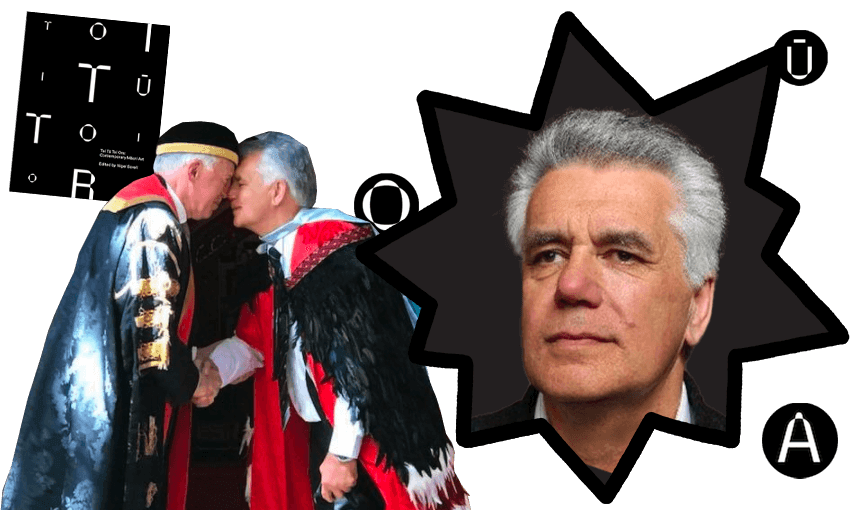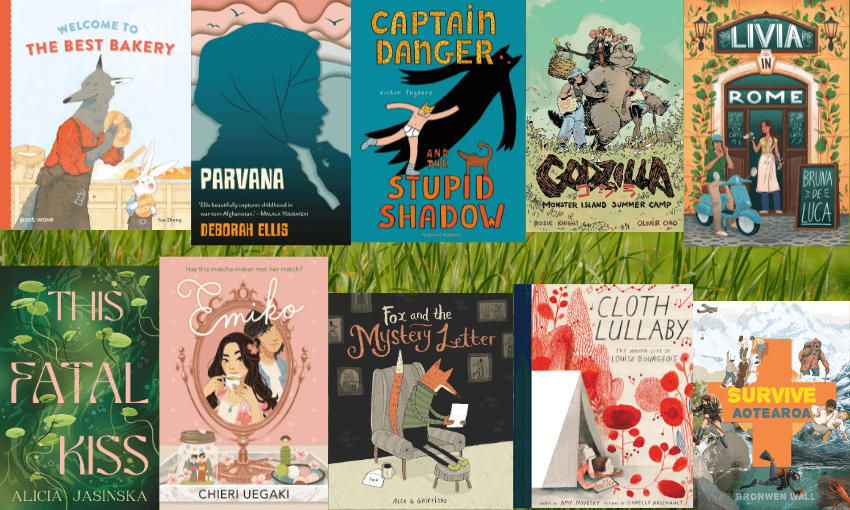Moana Jackson, the esteemed Māori lawyer and teacher, has died. The following is an excerpt from one of his last pieces of writing, the foreword to new book Toi Tū Toi Ora: Contemporary Māori Art.
Art is the telling of stories. In some cultures, storytellers begin by saying, “In the days before we remember”, or, “In the days of the ancestors”, while in others they trust in somebody or something else, and say, “In the beginning was the word and the word was God.”
Whichever words are used, the idea of “once upon a time” is a chosen glimpse into facts or fantasy. It can be the simple beginning of a narrative or represent the particular ideas and memories that a people have placed at the heart of their collective sense of being. It is a portal from creation to what Patricia Grace has called the “now-time”.
Māori art has a particular “once upon a time” that captures its own chosen glimpse into what might be called a sense of imagined possibility. Whether it is a poem, a song or an image, it can draw on the mystery of creativity, which Rangi Chadwick once called “the quiet space where anything seems possible”. Like the whatihua, the active cosmos that curves into the sky between the dreams of the seen and the unseen, it can be boundless in its vision and inspiring in its reach.
The art in Toi Tū Toi Ora captures a vision that emerged from the creative potential held within the void of Te Kore, before emerging into the world of light, Te Ao Mārama. The vision was then nurtured over centuries in the intellectual and cultural histories of iwi and hapū.
Each history is as distinctive yet as subtle as the differences in iwi dialect; they have shared enough common insights and values to constitute a unique Māori intellectual tradition. It was within that tradition that this ‘quiet space’ was found for art to flourish.
It was a tradition bound by the promise of “i ngā rā o mua” – the past time that stretches into a future as limitless as the whatihua. If the works in the collection have been open to other sources and influences, it is because the tradition from which each has sprung was also immeasurable and was never closed to a wondering of what might be.
In many ways, the Māori intellectual tradition is a navigational one, forged in journeys across the Pacific that looked back to Rangiātea, while longing to know what lay beyond that distant point where the earth met the sky. It has always been a daring, as well as imaginative, tradition propelled by both a longing to explore and the confidence that has come from the stories told in this land.
From the moment the first waka arrived on these shores, the stories and traditions adapted and grew to suit this land. For our people found and told new stories about the importance of place and the relationships they might have with the land and the universe, as well as with each other.
In the beginning stories, some of the land seemed so vast the people called it Aotearoa – land of the long white cloud. Yet it was never so large or forbidding that they couldn’t see its beauty in small things or notice if the earth rose up and shrugged her shoulders. And so the land became Papatūānuku, the mother who shaped relationships and held the people close as they figured out what she might have to say.
The sea swirled along longer coastlines than time had made known to them before, and it could seem more angry and sharp-tongued, too. Yet they knew its dangers as well as its calm and they soon learned its currents and its bounty. And so the sea became one with the land, joining time and place and life and eternity as the dead leapt over its depths to return to Hawaiki.
The rivers at first seemed to stretch further and rushed away more violently than any of the people had known on their other earlier islands. Yet they were still not as long as the far blue paths that brought the people here and their course could always be traced across the land. And so the rivers became the lifeblood of Papatūānuku and the tīpuna of the people who in each iwi would learn, in their own way, that they were the river and the river was them.
The mountains seemed to pierce the sky and break away from plains and forests that could lurk darker and more chilling than those that once looked down on tropical seas. Yet they were always somehow close and never far from sight. The mountains became monuments to iwi and hapū identity, markers of their relationships with the land that would forever call the people home.
The land nourished the people, even when there were moments of conflict and stress. Such times were the freighted costs of human fallibility but they also led to an awareness, as they do in all cultures, that people cannot exist in a power vacuum or maintain good relationships in a lawless state. And so the intellectual tradition gave rise to political and legal thought, and the iwi and hapū became polities, independent yet interdependent, because that is what living with the land and each other required.
The people thought their lives into being; the intellectual tradition eventually became what Te Rarawa Kohere has described as a “tūrangawaewae of thought”. Wherever iwi and hapū chose to make a place they could call home, history and the soft hands of the land always provided comfort because nothing was ever too far away and separation was only as relative as the pause between sleeping and waking.
Even though finding a place to stand in this new land was a daunting adventure, it was also a claim to the familiar, as these islands were still islands in the Pacific. They necessarily encouraged a way of seeing the world that included the imagined possibilities of looking beyond the horizon.
The stories our people told helped shape and were in turn shaped by the “tūrangawaewae of thought”. They gave expression to its emphasis on relationships and found meaning in its sense of intimacy and distance. Most of all, perhaps, they drew together the whakapapa of knowledge and the knowledge of whakapapa. They therefore ensured that just as whakapapa itself is a series of never-ending beginnings, in which new life always eases the sorrow of death, so the possibilities of the imagination could also be infinite.
Thus, when Tāwhaki brought the baskets of knowledge from the heavens, he unleashed the potential for creativity that was always latent in Te Kore. The enlightenment of Te Ao Mārama then followed in the realisation that there was no end to what might be known, because the baskets were infinite in size, too. Indeed, knowledge and imagining were only limited by the willingness to traverse the mind-fields of observation and assumption, philosophy and science, experience and experimentation, reason and hope.
The mind-fields were constantly tested and expanded as new questions were asked or new discoveries were made. If the answer to a question was sometimes just another question, it simply meant that there was more to know before enlightenment was possible. A sense of place and even of intimate distance always engendered new hope, as it did on those first long and lonely waka voyages.
Toi Tū Toi Ora: Contemporary Māori Art (Penguin, $65) is available from Unity Books Auckland and Wellington.



